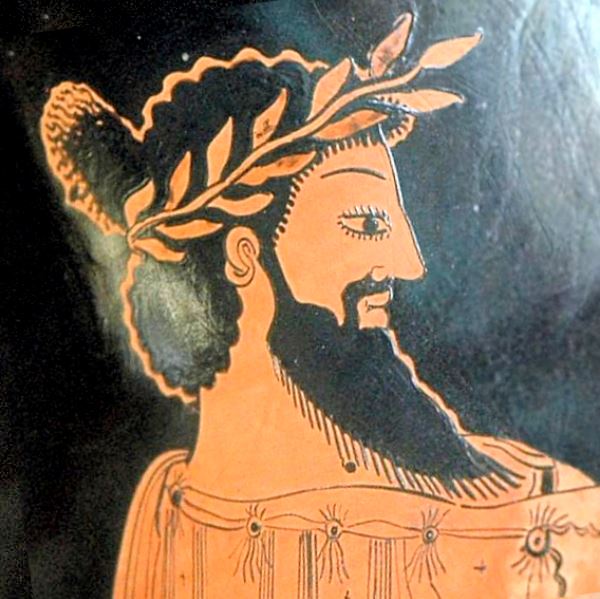Reportedly, Croesus on the death of his father Alyattes faced a rival claimant to the throne in Pantaleon, son of Alyattes by a different mother. Croesus prevailed, and a number of the opposite faction were executed, and their property confiscated. As soon as his reign was secure, Croesus continued his sires' wars against the Asian Greeks, bringing all the Aeolian and Ionian Settlements on the coasts of Asia-Minor under Lydian rule, from whom he exacted tribute; However, he was willing to be friendly to European and Aegean Greeks, concluding various treaties with them, with Sparta, in particular, later in life.
Croesus' uneasy relations with the Greeks obscures the larger fact that he was the last bastion of the Ionian cities against the increasing Persian power in Anatolia. He began preparing a campaign against Cyrus the Great of Persia.
Before setting out, he turned to the Delphic oracle and the oracle of Amphiaraus to inquire whether he should pursue this campaign and whether he should also seek an alliance. The oracles answered, with typical ambiguity, that if Croesus attacked the Persians, he would destroy a great empire – this would become one of the most famous oracular statements from Delphi.
The oracles also advised Croesus to find out which Greek state was most powerful and to ally himself with it. Croesus, now feeling secure, formed an alliance with Sparta in addition to those he had with Amasis II of Egypt and Nabonidus of Babylonia, and launched his campaign against the Persian Empire in 547 BC. Croesus was intercepted near the Halys River in central Anatolia and an inconclusive battle was fought at Pteria. It was the usual practice in those days for the armies to disband for winter and Croesus did so accordingly. Cyrus did not, however, and he attacked and defeated Croesus in Thymbria and later in Sardis, eventually capturing him. It became clear that the powerful empire destroyed by the war was Croesus's own.
Croesus' uneasy relations with the Greeks obscures the larger fact that he was the last bastion of the Ionian cities against the increasing Persian power in Anatolia. He began preparing a campaign against Cyrus the Great of Persia.
Before setting out, he turned to the Delphic oracle and the oracle of Amphiaraus to inquire whether he should pursue this campaign and whether he should also seek an alliance. The oracles answered, with typical ambiguity, that if Croesus attacked the Persians, he would destroy a great empire – this would become one of the most famous oracular statements from Delphi.
The oracles also advised Croesus to find out which Greek state was most powerful and to ally himself with it. Croesus, now feeling secure, formed an alliance with Sparta in addition to those he had with Amasis II of Egypt and Nabonidus of Babylonia, and launched his campaign against the Persian Empire in 547 BC. Croesus was intercepted near the Halys River in central Anatolia and an inconclusive battle was fought at Pteria. It was the usual practice in those days for the armies to disband for winter and Croesus did so accordingly. Cyrus did not, however, and he attacked and defeated Croesus in Thymbria and later in Sardis, eventually capturing him. It became clear that the powerful empire destroyed by the war was Croesus's own.

(1)
Croesus
.jpg)
An
AR
Half-Stater
|
Siglos
struck 561-546 BC
in
Sardis
Obverse: Confronted foreparts of a lion and a bull
Reverse: Two incuse square punches
Diameter:
16 mm
Die Orientation: -
Weight: 5.41 g
Die Orientation: -
Weight: 5.41 g
No notes for this coin
SNG von Aulock 2877
